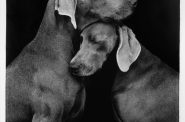Martin Ramirez, “Courtyard 1954”
Mutope Johnson ponders the fantastical, obsessive art work of Martin Ramirez at the Milwaukee Art Museum.
Go to the Milwaukee Art Museum, pick a work, stand before it for a long time. Tell us what you see. TCD’s One Piece at a Time series began with that thought in the summer of 2010. TCD senior editor Tom Strini handled the One-Piece duties then and in 2011. This summer, we have a variation. In the winter and spring, Strini worked with a class of graduate students in art at UWM. They did the One Piece drill at the Milwaukee Art Museum, wrote draft essays, then survived a writer’s boot camp with Strini. We’re publishing the results, one piece at a time. Now, Mutope Johnson.
Martín Ramírez was born in Jalisco, Mexico, in 1895. He migrated to the United States in 1925 to find work on the California Railroad and in the California mines.
Since his death in 1963, Ramírez was labeled as one of the greatest Mexican self-taught artist of the 20th century, but ironically it is not his first label. Ramírez, out of work and homeless, was picked up by police and committed to a psychiatric asylum after being diagnosed as a catatonic schizophrenic. Ramírez lived out the rest of his days in two institutions, the Stockton State Hospital and the DeWitt State Hospital in California, and in those places created the lion’s share of his work. Later labels for Ramírez: Folk Artist and Outsider Artist’
Ramírez’s profoundly creative characteristics are evident in Courtyard 1954. It features a train and track, prominent motifs in his work, make their way across the upper portion of his composition, amid the intense, obsessive horizontal and parallel line patterns typical of his work. Ramírez’s wonderfully crafted form and pictorial spaces dominate the work.
Previously on the UWM Grad Series: Tyler Meuninck on Martin Puryear’s Maroon; Gregory Martens on Joseph Cornell’s Celestial Navigation of Birds; Julie Rogers on Tara Donvan’s Bluffs; Emily Scheider on Chuck Close’s Nancy; Matthew W. Lee on Cow Herd at Lake Starnberg; Corbett Toomsen on Henry Vianden’s Landscape with Mountains and River; Brooklyn Henke on Caillebotte’s Boaters on the Yerres; Joe Grennier on Warhol’s Brillo Box; Eric Roman Beining on Torso of a Male Athlete; Aneesha Baldeosingh on Jules Olitski’s Heat Resistance.
Get more out of TCD. Visit our User Guide/FAQ.
Art
-
Exhibit Tells Story of Vietnam War Resistors in the Military
 Mar 29th, 2024 by Bill Christofferson
Mar 29th, 2024 by Bill Christofferson
-
See Art Museum’s New Exhibit, ‘Portrait of the Collector’
 Sep 28th, 2023 by Sophie Bolich
Sep 28th, 2023 by Sophie Bolich
-
100 Years Of Memorable Photography
 Sep 18th, 2023 by Rose Balistreri
Sep 18th, 2023 by Rose Balistreri














